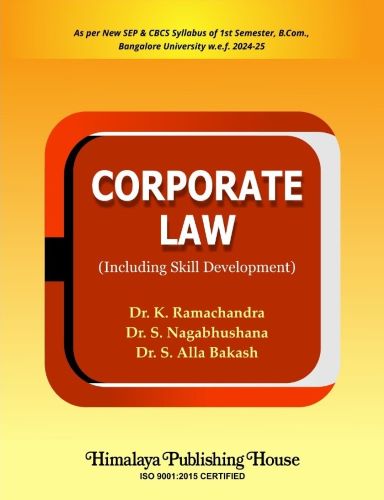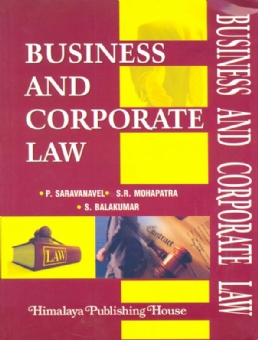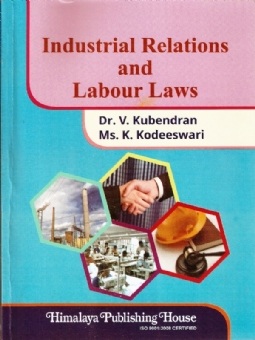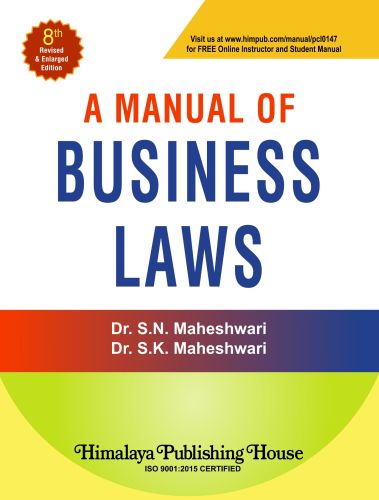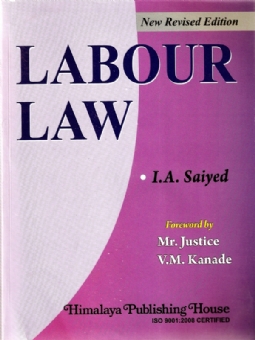The book will provide ample insights to the readers about the various concepts, theories, models, challenges, issues, opportunities, skill development and competency building in the dynamic field of Corporate Law based on Companies Act 2013 and subsequent amendments. This book provides insight about the complete Companies Act to the readers and helps them to understand various types of organisations under the corporate law. It also provides an understanding about the formation of a company with all required legal rules and regulations.
The present book throws light on the various positions in a company along with their duties and responsibilities. In the first chapter nature and features Companies Act 2013, kinds of companies are provided. In the second chapter all about formation of a company, consisting of various stage and important documents such as memorandum of association, articles of association, prospectus and certificate of incorporation details are well articulated.
In chapter three, Share Capital, Allotment of Shares, Bonus Shares, Debentures; Rules for issue of Debentures and Bonds have been well explained. The fourth chapter consists of the entire aspects of company administration, the qualification, powers, liabilities and the like of director and Key Management Personnel such as Managing Director, Independent Directors, Whole Time Directors, Women Directors, Company Secretary, C-Suite Executive such as CEO, COO, and CFO positions; and Corporate Meetings have been explained as per the Corporate Law. In the fifth chapter all about Liquidation of companies, Liquidation Process and Role, Duties and Power of Liquidator have been provided for readers.
In the skill development domain constituting a private limited company as per corporate law, preparation of memorandum and articles of association, roles and responsibilities of senior manager in regard to company meetings, agenda for AGM, preparation of minutes of the meetings, preparation of prospectus and the like have been taken care of.
Contents –
Chapter 1: INTRODUCTION TO COMPANY
Meaning and Definition – Features – Companies Act 2013 – Kinds of Companies (Concept, Definition and Features) – One Person Company, Private Company, Public Company, Company Limited by Guarantee, Company Limited by Shares, Holding Company, Subsidiary Company, Government Company, Associate Company, Small Company, Foreign Company, Listed Company, Dormant Company. Body Corporate and Corporate Body.
Chapter 2: FORMATION OF COMPANIES
Steps in Formation of a Company, Promotion Stage, Meaning of Promoter, Position of Promoter and Functions of Promoter, Incorporation Stage – Meaning, Contents, Forms of Memorandum of Association and Articles of Association and its Alteration, Distinction between Memorandum of Association and Articles of Association, Certificate of Incorporation, Subscription Stage – Meaning and Contents of Prospectus, Misstatement in Prospectus and its Consequences.
Chapter 3: SHARE CAPITAL, DEBENTURES AND BONDS
Types and Definition of Shares, Issue of Share – Book Building – Offer, Allotment of Shares – Pro-rata Basis, Employee Stock Ownership Plan (ESOP), Buyback, Sweat Equity, Bonus, Right, Capital Reduction, Share Certificate, Demat System, Transfer and Transmission, Redemption of Preference Shares, Rules regarding Dividend and Distribution of Dividend. Debenture – Definition, Types, Rules Regarding Issue of Debenture, Bonds – Issues of Bonds, Types of Bonds – Concepts Only.
Chapter 4A: COMPANY ADMINISTRATION
Director (Concept and Definition), Director Identification Number [DIN], Appointment and Qualification, Position, Rights, Duties, Power, Resignation, Liabilities, Removal and Resignation of Director. Appointment, Qualifications and Duties of Managing Director, Whole-time Director, Resident Director, Independent Director, Women Director, Company Secretary, Chief Executive Officer, Chief Operational Officer, Chief Financial Officer.
Chapter 4B: CORPORATE MEETINGS
Corporate Meetings – Shareholder and Board Meeting, Types of Meetings – Annual General Meeting, Extraordinary General Meeting, Meeting of BOD and Other Meetings (Section 118), Requisite of Valid Meeting – Notice, Agenda, Chairman, Quorum, Proxy, Resolutions, Minutes, Postal Ballot, E-voting, Video Conferencing.
Chapter 5: LIQUIDATION OF COMPANY
Nature and Causes – Types of Liquidation. Difference between Liquidation, Bankruptcy and Insolvency. Liquidation Process – Role, Duties and Power of Liquidator.
Skill Development
Model Question Paper

